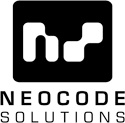RAG in AI Systems: Indexing, Chunking, and Retrieval Quality
If you're building or working with AI systems, you know just how important it is to offer responses that feel truly relevant and contextual. RAG (Retrieval-Augmented Generation) pipelines rely on how well you index, chunk, and retrieve data—each step affects the next. The way you handle document chunking especially can decide whether your results are coherent or confusing. But not all chunking methods are created equal, and the differences might surprise you.
Understanding the RAG Pipeline: Stages and Dependencies
Before examining the key advantages of the RAG (Retrieval-Augmented Generation) pipeline, it's essential to grasp the interplay between its three primary stages: Retrieval, Augmentation, and Generation.
The process begins with data preprocessing, during which documents are organized, cleaned, and segmented using chunking techniques. This step is crucial as effective chunking enhances the quality of retrieval and maintains semantic coherence by adhering to document structures.
Following this, the Retrieval stage engages with the prepared chunks, greatly affecting the contextual relevance of the information retrieved and ultimately contributing to the knowledge enhancement process.
The Critical Role of Document Chunking in RAG Systems
While large language models are proficient in processing natural language, their performance is significantly influenced by the quality of their input structure. In Retrieval-Augmented Generation (RAG) systems, document chunking plays a crucial role in optimizing search and generation capabilities. By dividing lengthy documents into smaller, contextually rich segments, it enhances indexing efficiency and facilitates more effective retrieval processes.
Research suggests that chunk sizes between 100 and 300 words generally offer an effective compromise, preserving relevant context while adhering to token limitations imposed by the underlying language model. Properly implemented document chunking can lead to improved retrieval accuracy by aligning user queries with pertinent information more effectively.
Moreover, utilizing advanced chunking methods such as semantic chunking can help RAG systems produce accurate responses that are relevant to user queries while minimizing computational overhead.
This structured approach not only supports better information retrieval but also contributes to the overall efficiency of the model's performance in generating informed responses.
Comparing Chunking Methods: From Fixed-Size to Semantic Techniques
Document chunking is a critical component in optimizing retrieval-augmented generation (RAG) systems; however, different chunking techniques present varying levels of effectiveness depending on the context.
Fixed-size chunking is straightforward and ensures uniformity. However, this approach can result in the loss of contextual information, particularly in documents that are less structured.
In contrast, sentence-based chunking divides text at natural sentence boundaries, which can enhance coherence and improve the retrieval process for specific pieces of information.
Paragraph-based chunking maintains a degree of logical structure, though it can lead to discrepancies in chunk size and may challenge token limits.
Semantic-based chunking utilizes natural language processing (NLP) to identify distinct concepts within the text. This method can significantly enhance the accuracy of retrieval-augmented generation but often introduces added complexity into the chunking process.
Additionally, overlapping chunking is another technique that reinforces contextual consistency by creating segments that share content, thereby improving retrieval effectiveness.
These various chunking methods demonstrate differing strengths and weaknesses, which are crucial considerations for implementing an efficient RAG system.
Advanced and Task-Specific Chunking Approaches
As chunking methods have progressed, they've moved beyond basic fixed-size or semantic divisions to incorporate advanced and task-specific approaches that provide greater precision in segmenting information for retrieval-augmented generation (RAG).
One notable technique is recursive chunking, which organizes documents into a hierarchical structure. This method preserves semantic relationships while adhering to token limitations, thus enhancing retrieval efficiency.
Additionally, document-specific chunking strategies play a critical role in indexing by accommodating the distinctive formats of various documents, notably in specialized domains such as legal and academic content. This adaptability is essential for optimizing information retrieval in complex knowledge bases.
Overlapping methods, including the use of sliding windows, have been implemented to reduce the loss of contextual information during the retrieval process.
Best Practices for Optimizing Chunking and Retrieval Performance
Optimizing chunking and retrieval performance in retrieval-augmented generation (RAG) systems requires careful consideration of various factors. A critical aspect is the selection of an appropriate chunk size, which typically ranges from 100 to 300 words. This range is designed to comply with token limits while maintaining semantic integrity.
Incorporating overlapping chunks—between 10% and 20%—is advised to mitigate the risk of losing valuable context at the boundaries of chunks. This practice is especially important when working with diverse datasets and document types, which may have varying structures and contexts.
Utilizing a hybrid chunking strategy can also enhance accuracy. By combining semantic chunking with page-level approaches, practitioners can create more effective retrieval systems that are better equipped to address information retrieval challenges.
Additionally, it's essential to routinely conduct A/B testing and monitor key performance metrics such as hit rate, precision, and recall.
Regular evaluations and iterative refinements of these strategies will contribute to achieving strong retrieval outcomes and improving the overall performance of RAG systems.
Conclusion
By understanding the RAG pipeline and choosing smart chunking strategies, you’ll directly improve your AI system’s ability to retrieve and generate accurate, relevant responses. Whether you stick with fixed-size chunks or adopt advanced, semantic approaches, chunking’s quality shapes retrieval success. When you combine best practices with a focus on context and efficiency, you’ll deliver better user experiences and more reliable information. Optimize your chunking methods, and RAG will become a powerful asset in your AI toolkit.
